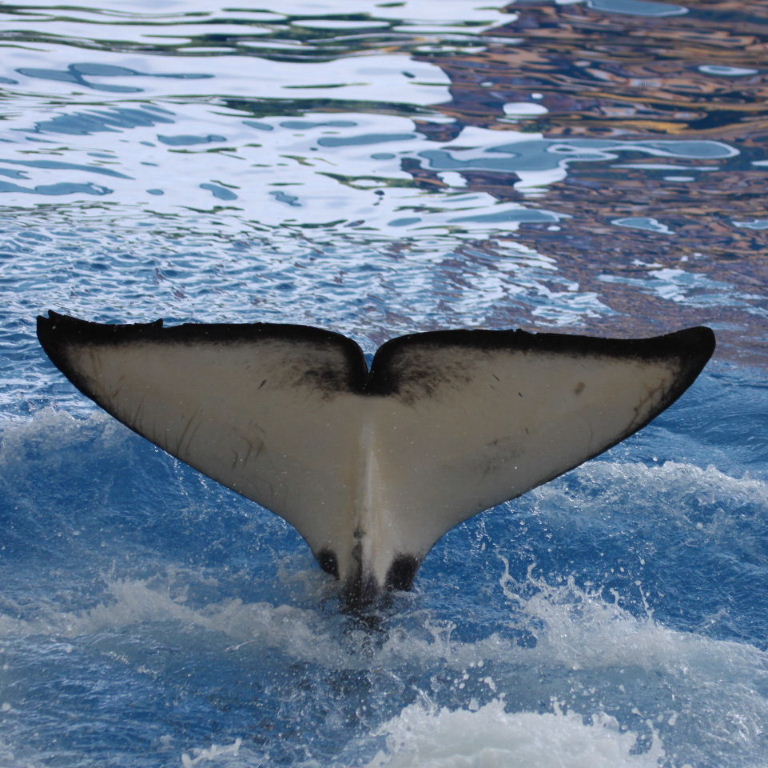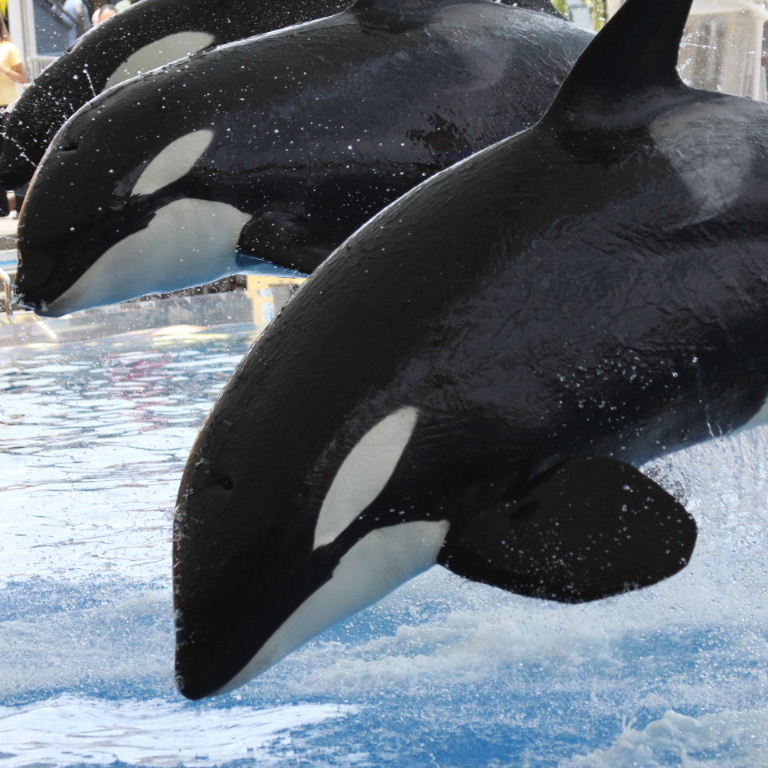Orca Orcinus orca



The Orca, also called Killer Whale, with its dorsal fin, is not a true whale but belongs to the dolphin family,
the largest of the family. They can reach 8 metres (26 feet) in length. Orcas can be found throughout most of
the world's oceans from the Arctic to the Antarctic.



Wild Orcas do not kill humans but some goups prey on seals, baby whales and smaller dolphins, giving them their
"killer whale" name. Most eat fish. There is only the one species globally but five or more "eco-types" have been identified
based on variations in size, the black and white markings (especially the white "eye patch"), dorsal fin structure, diet,
communication and habits. Some eco-types overlap in ocean range but do not generally interact or inter-breed. Shown are one of
the North Atlantic, herring-/mackerel-eating, eco-types.



Males are larger than females and have straight upright dorsal fins - first picture, top row (although
these can flop over to one side when out of the water - second row, centre);
the dorsal fins of females are curved backwards (above, cente).



Orcas live in pods (family-based groups) with a complex social structure and communication
skills (including vocal). They can teach learned behaviours to others. They are intelligent and, controversially,
are trained to perform in shows.


